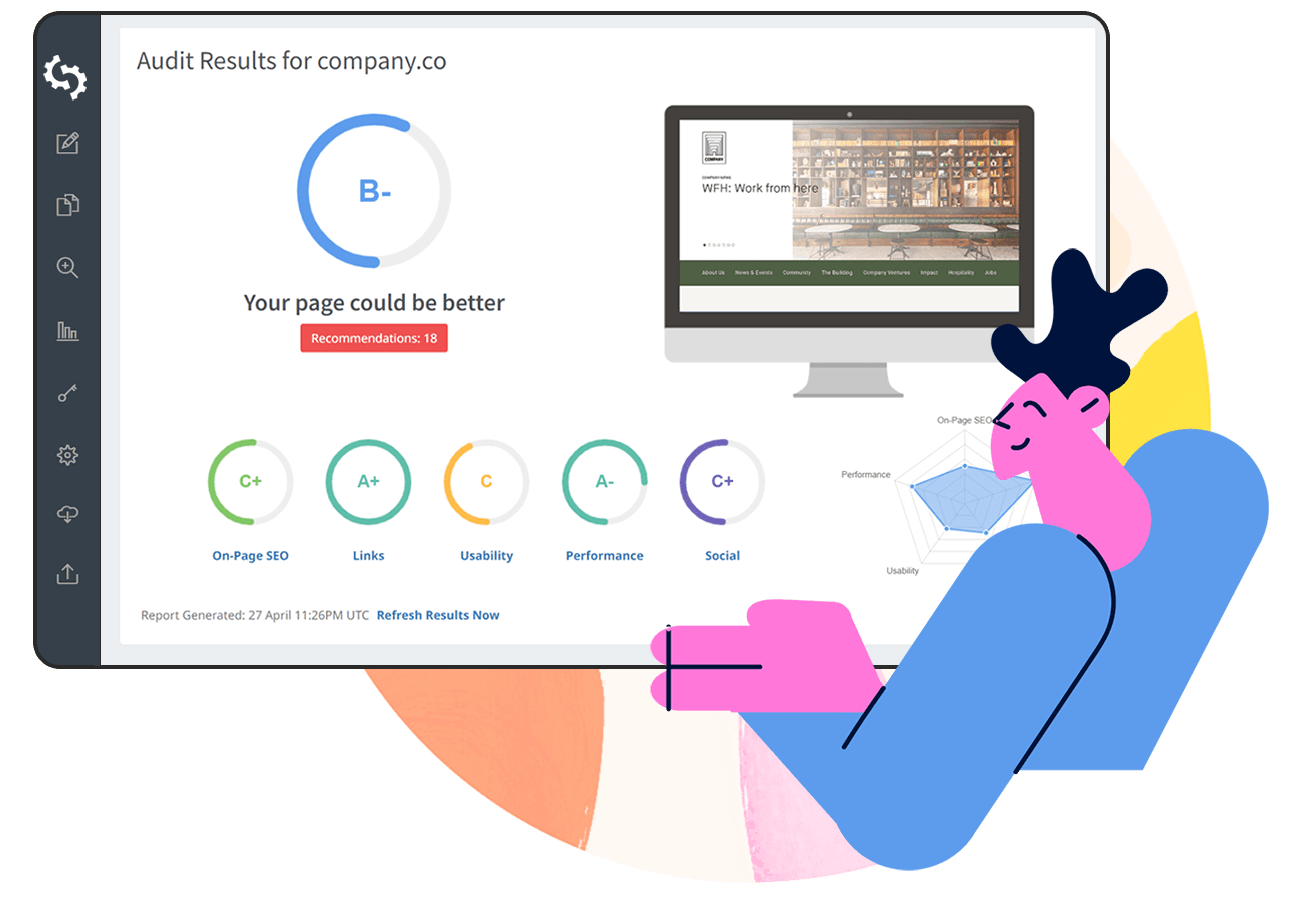
What is a Backlink Profile?
A backlink profile is a portfolio of all incoming links from other websites to your domain. A well-maintained SEO link profile boosts your domain’s link equity and helps your site rank higher for your target keywords.
Your inbound link profile should consist of organic, natural links, including a balanced mix of dofollow and nofollow links. Remember, the quality of backlinks matters more than quantity.
You should also have editorial links from high-authority domains using a mix of naked URLs, generic, branded, and keyword-based anchors.
Understanding and optimizing your backlink profile can dramatically enhance your website's visibility and search engine credibility.
Let’s look at what makes a strong link profile with examples and how you can create your own solid backlink portfolio.
What Makes a Strong Backlink Profile?
A good link profile has a mix of quality, diversity, and authenticity in terms of backlinks. There are four major things to look for in a well-balanced link profile.
These are:
High-Authority Editorial Links
Incoming links from reputable and authoritative websites are most impactful.
For instance, an editorial-given link from The New York Times and a link from a local blogger’s website don’t carry the same weight.
When evaluating backlink quality, I always start with site reputation and audience trust. A good backlink is one that not only improves SEO metrics but also drives relevant referral traffic.
While we were working with a healthcare client, we secured a backlink from a well-known medical journal with a DR of 75 and over 200,000 monthly organic visitors.
That single link drove 1,200 referral visits in the first month and significantly boosted the client’s keyword rankings for competitive terms.
- Paul DeMott, CTO at Helium SEO
Dofollow links from reputed domains having a high domain strength pass the maximum link equity and raise the value of the link profile.
Also, a strong profile should have minimal to no links from private blog networks (PBNs) or free-for-all (FFA) sites.
Having a large number of such low-quality links in your link profile appears spammy to search engines. Such backlinks are harmful because they are seen as attempts to manipulate search engine results.
Link Diversity
While quality trumps quantity, having a substantial number of backlinks is indicative of wide-ranging content relevance and appeal.
A large count of high-quality backlinks can significantly enhance your SEO performance.
When building backlinks, you should acquire them from a variety of domains and sources.
Some of the white-hat link acquisition tactics to use are guest posting, digital PR, resource page link building, broken link building, unlinked brand mentions, and others.
Link Type
The type of backlink decides the link profile score.
Dofollow links pass link juice, while nofollow links do not.
However, nofollow links from trusted and high-traffic sites are still useful because they help to maintain a natural dofollow vs nofollow links ratio.
A strong link profile has a mix of dofollow and nofollow links.
From my perspective, a link is considered high-quality if it’s a dofollow link from a reputable site, naturally placed within content relevant to our niche.
- Iryna Podliesna, Link Building Specialist at Collaborator
There is no magic ratio to follow, however, the ratio should preferably be higher than nofollow because dofollow inbound links directly build your domain strength and ranking power.
Anchor Text Diversity
A varied anchor text strategy is important for a natural link portfolio. It should include:
- Naked URLs like "seoptimer.com".
- Branded Anchors like "SEOptimer".
- Generic Anchors, such as “visit us,” "click here," or "learn more".
- Keyword-based anchors like “link building guide,” “link building tips,” etc.
You can see a complete list of anchors pointing to your domain using the SEOptimer backlink research tool.
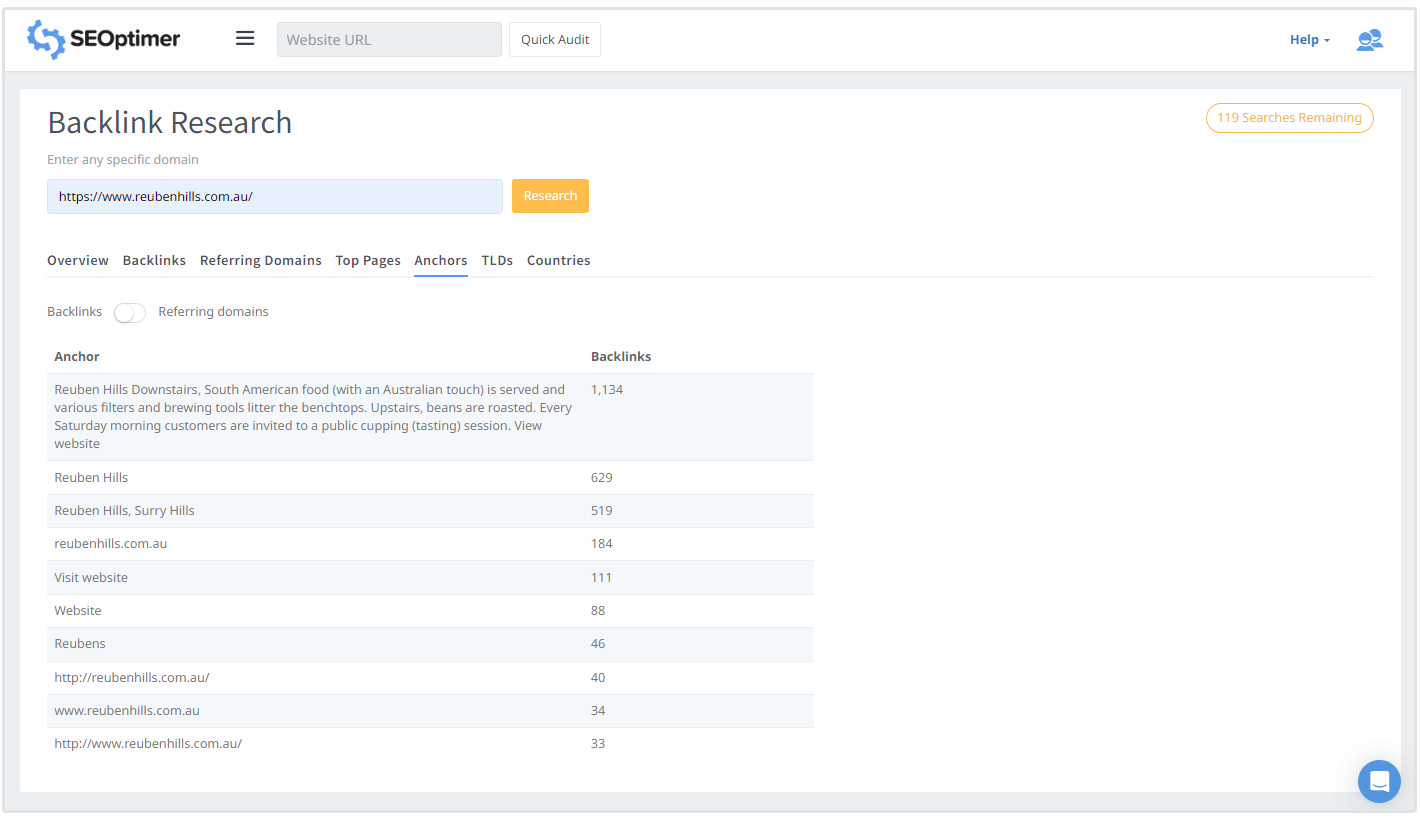
A well-balanced mix of anchors helps maintain a natural link profile and reduces the risk of being penalized for over-optimization.
What Makes a Bad Backlink Profile?
A poor and unnatural backlink profile significantly undermines your website's SEO efforts and potentially exposes your website to search engine penalties.
A good rule of thumb is that: if a link is easy to earn, then it probably doesn't have much SEO value.
- Marc Hardgrove, CEO at TheHOTH
Here are the top characteristics of a poor backlink profile:
High Volume of Toxic Backlinks
Toxic and low-quality links come from spam domains that are typically recognized for spamming or malicious activities. Bad backlinks can harm your site's ranking and overall SEO health.
Gaining backlinks in ways that violate search engine guidelines, such as purchasing links, excessive link exchanges, or using deceptive cloaking techniques, can flag your site as suspicious.
Low-Quality Business Directories
Large-scale link acquisition from low-quality web directories can lead to a poor link profile.
While some industry-specific directories are valuable, others lack credibility and can negatively impact your backlink profile if they are seen as link farms by search engines.
Check for incoming links from directories with no moderation or quality control. Remove all external links coming from outdated web directories, as these harm your link profile.
Here is an example of a web directory offering paid backlinks:
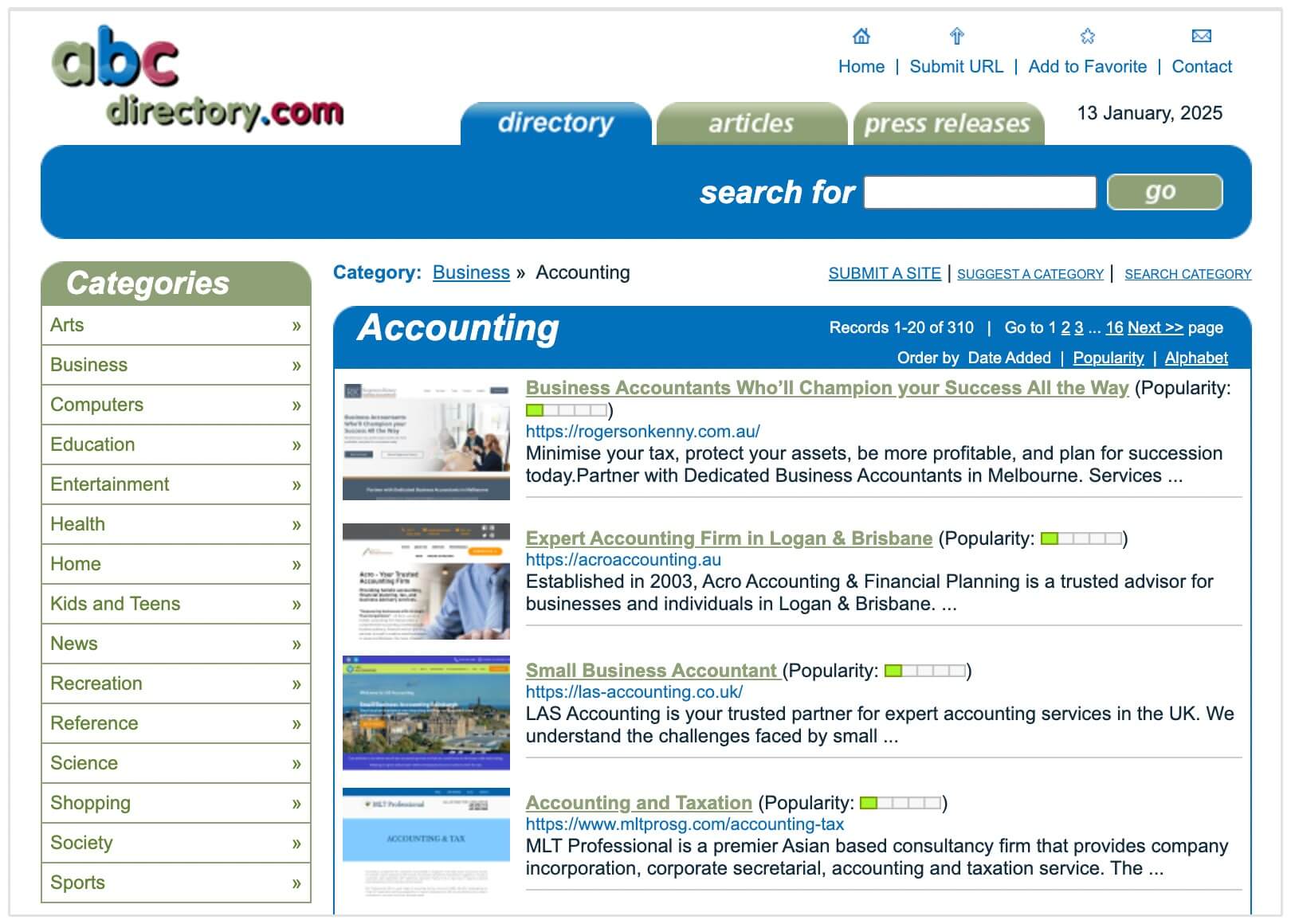
For $49, you can list your website with a dofollow link to your site.
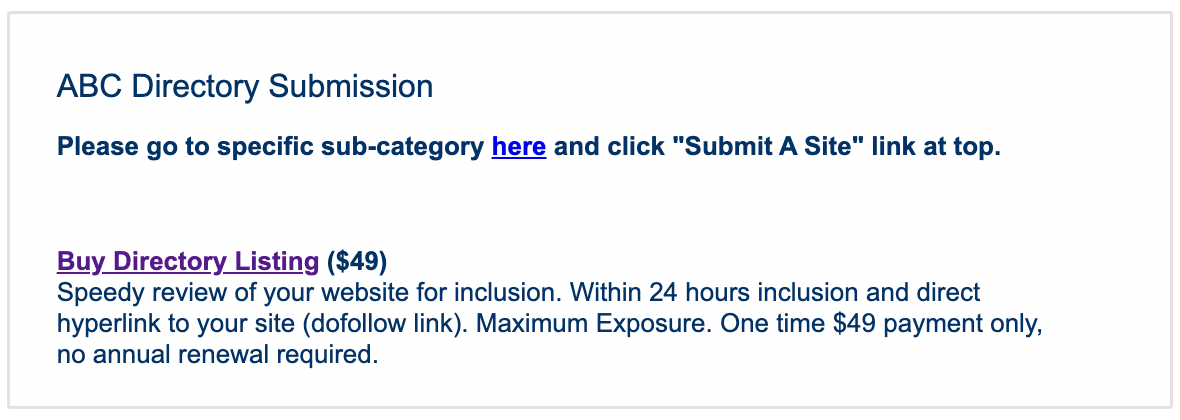
Websites selling dofollow links are a violation of Google guidelines and can put your site at risk of algorithmic penalties.
Guest Posting or Article-Campaigns at Scale
Producing large volumes of guest posts or articles to obtain backlinks rather than adding value to readers counts as spam.
These content pieces are mostly of low quality and contain over-optimized anchor texts, which can be flagged as spammy.
You should look for inbound links from article directories or from websites publishing guest posts with keyword-rich anchor texts.
Ezine Articles is an example of an article directory that offers hyperlinks with exact-match anchors like the one below:
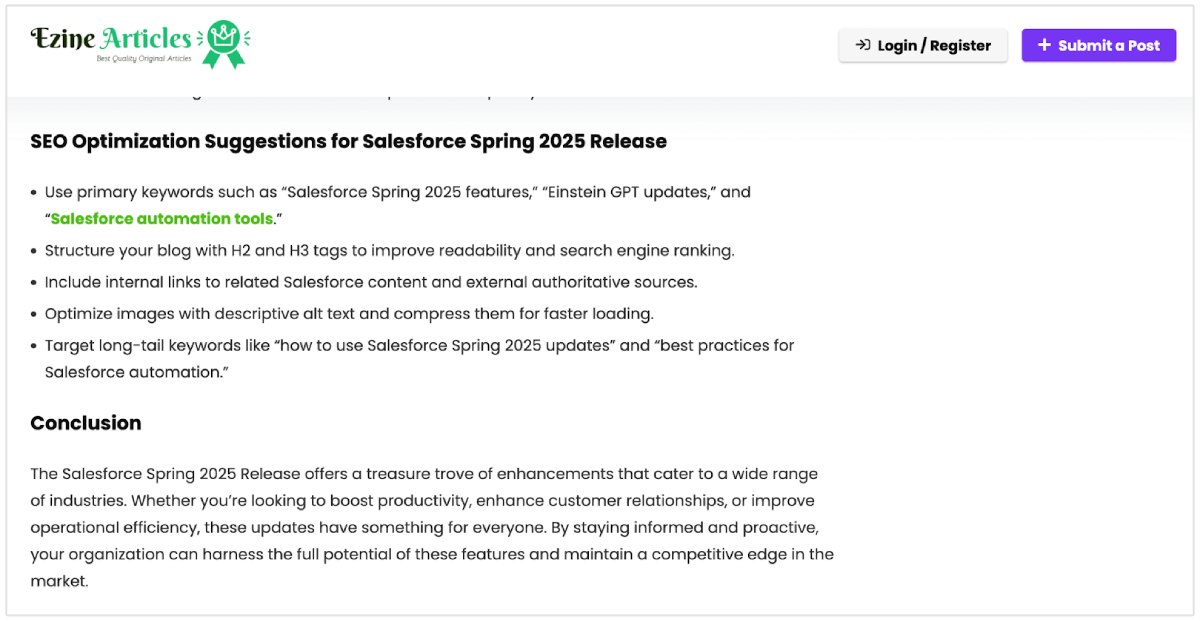
Backlinks from article sites that use keyword-rich anchors and are mass-published across multiple sites breach Google's guidelines.
Spam Backlinks from Comments
Placing backlinks in the comment section is a tactic often used by spammers. It is a poor practice and is devalued or penalized by search engines.

Analyze your link profile to find incoming links coming from the comment area. A large number of such links, especially those that use keyword-rich anchors, invite penalties.
Money Anchor Texts
Overuse of money-driven anchor texts can look manipulative and lead to penalties. It suggests an attempt to game search engine algorithms rather than provide genuine user value.
For example, a link to a financial advisor’s website with an anchor ‘best financial advisor’ will be considered a money anchor because the site will try to rank organically for that keyword to generate leads. Instead, using a branded anchor text would be much better.
You should look for such anchors that are overused in your link profile.
Irrelevant or Non-Contextual Links
Links that are not relevant to the content of your site or are placed in an unrelated context can dilute your backlink profile's effectiveness and signal poor quality to search engines.
You want to look at a site's relevancy. If a site is hyper relevant to your industry, this will signal to google that you have higher EEAT.
Although domain authority is important, relevancy is even more important. You want to find links that are highly relevant to your industry and will move the needle the most.
- James Gibbon, Founder at offDApage
For example, if a blog about healthy eating includes a link to a website selling car parts, that’s an irrelevant link. The backlink is irrelevant because the topic of car parts has no relation to the content and theme of the blog post about nutrition and health.
Such practices can confuse readers and negatively impact the credibility of the publishing site, potentially resulting in penalties from search engines like Google.
A large number of irrelevant incoming links from low-quality domains results in a poor link profile.
Location of the Backlink
The location on the page where the backlink appears can also impact its value. Links placed within relevant content above the fold and within the main content body are valued more compared to footer or sidebar links.
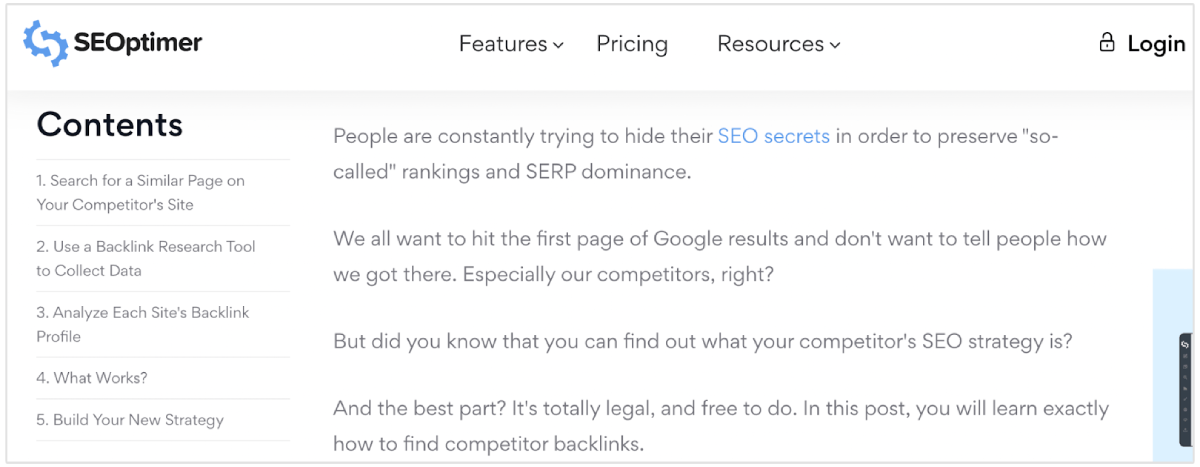
A large number of footer or sidebar hyperlinks with keyword-rich anchors is a classic example of a poor link profile.
Where the link lives on the page matters as much as the page itself. A link buried in a footer or stuck in a sidebar? Worthless. The value is in a link embedded naturally within well-written, high-value content.
I will be looking at the context and content placement in assessing link profiles.
- Peter Lewis, CMO at Strategic Pete
While evaluating your link profile, you should look for such backlinks and take action to remove them.
Examples of Great Backlink Profiles
Now, I will share three examples of great backlink profiles from which you can take some inspiration.
Forbes
Forbes, being a reputed media publication, has an exceptional link profile. When checked using the SEOptimer backlink checker, it has a domain strength of 97 (which is hard to achieve and more than the average), and a page strength of 66.
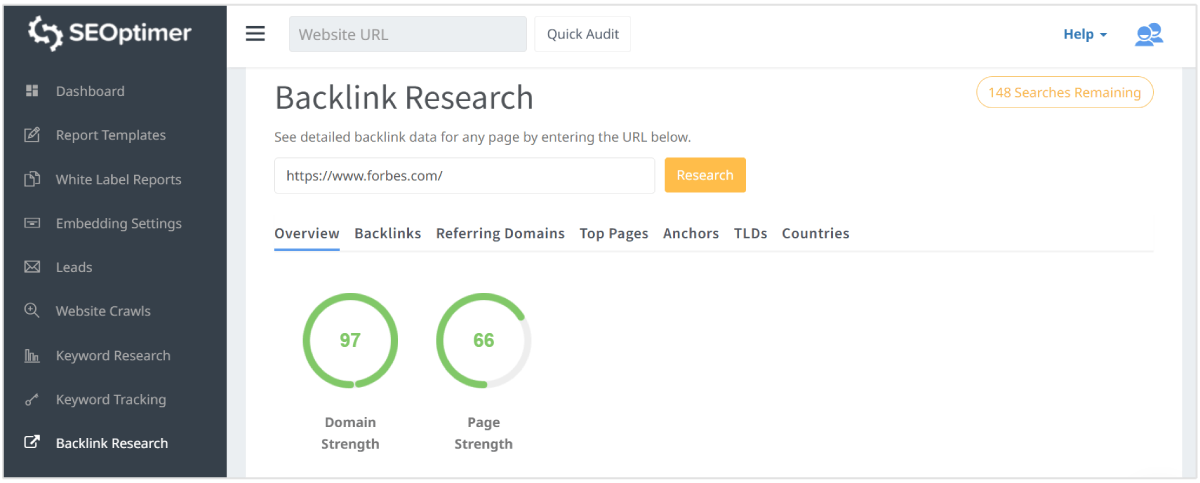
The domain has over 86 million backlinks from around 1.4 million referring domains. Approximately 75.22% of the links are dofollow, while 24.78% are nofollow.
If you look at the anchors, they have a mix of branded, naked URL, generic, and long-tail anchors. Hence, there is no over-optimization done. The link profile is solid and natural.
Mayo Clinic
One of the leading healthcare resources that ranks for a number of healthcare-related searches, Mayo Clinic enjoys a great reputation in Google.
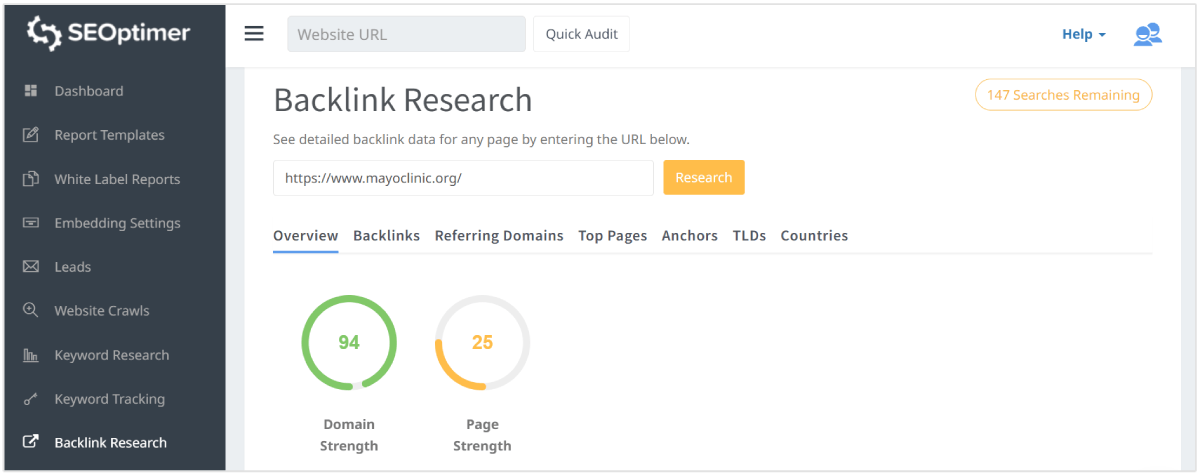
Their domain strength is a whopping 94, and a page strength of 25.
They have over 49 million backlinks from 346.2K referring domains. For this domain, approximately 93.08% of the backlinks are dofollow, while 6.72% are nofollow.
Again, the anchor texts look natural and have a combination of branded and generic anchors.
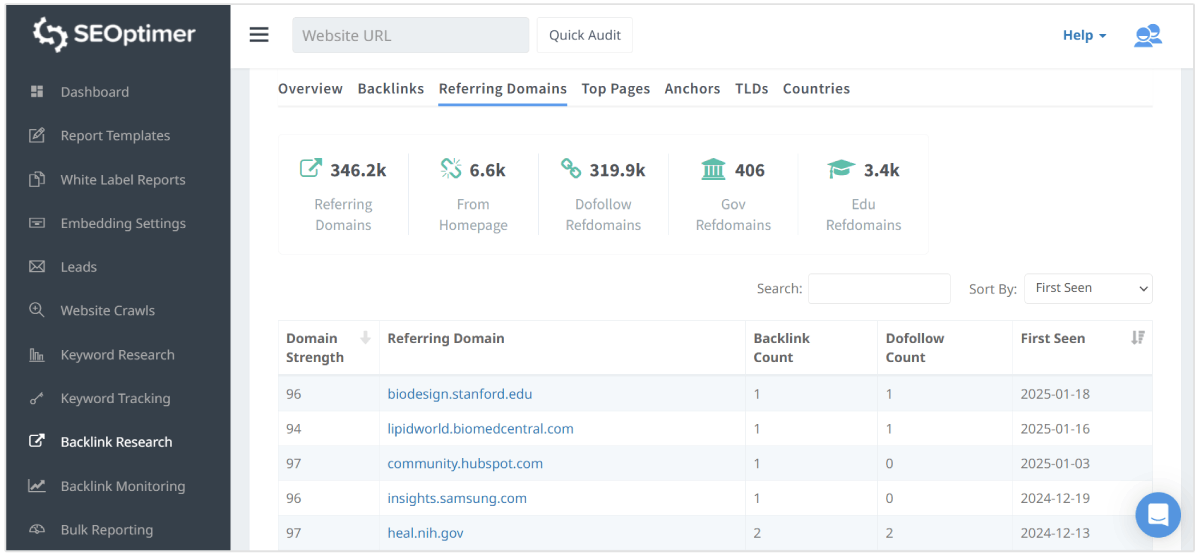
Amazon
One of the largest ecommerce stores, Amazon enjoys an exceptionally high domain strength. It has a domain strength of 98 and a page strength of 29.
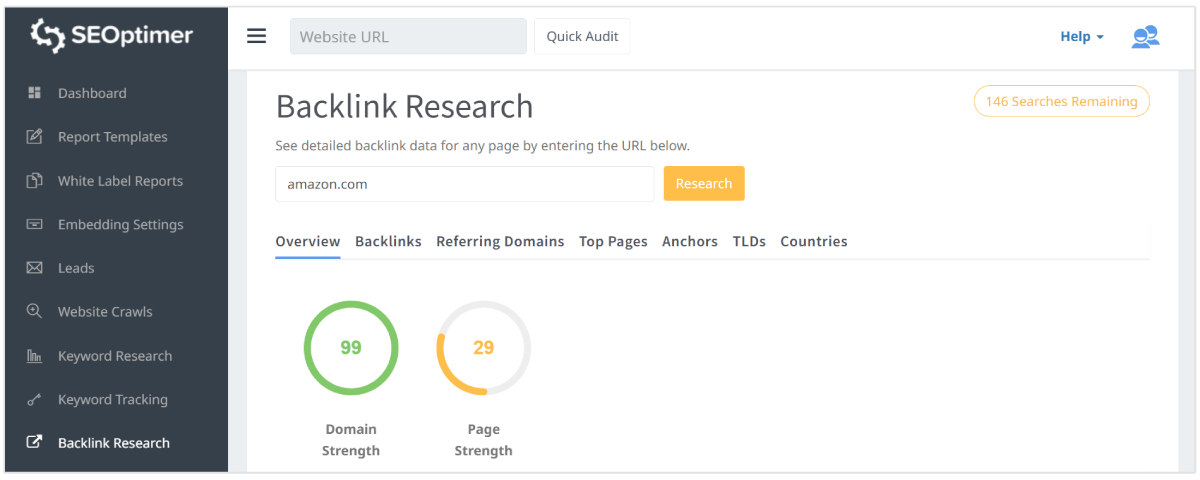
The ratio of dofollow to nofollow links is 51:49%. Approx 51.81% of the backlinks are dofollow, while 48.17% are nofollow.
Most of the anchors are generic and CTA-based.
How to Check Your Backlink Profile
You can check your website’s link profile using the SEOptimer backlink research tool.
Enter your domain and click Research.
The Overview Tab will show you two top-level metrics: Domain Strength and Page Strength. The higher the value, the better the authority of your domain.
The Backlinks Tab will show the actual backlinks. You can see the referring page URL, the target page, the anchor text, the link type (dofollow/nofollow), and the strength of the referring domain.
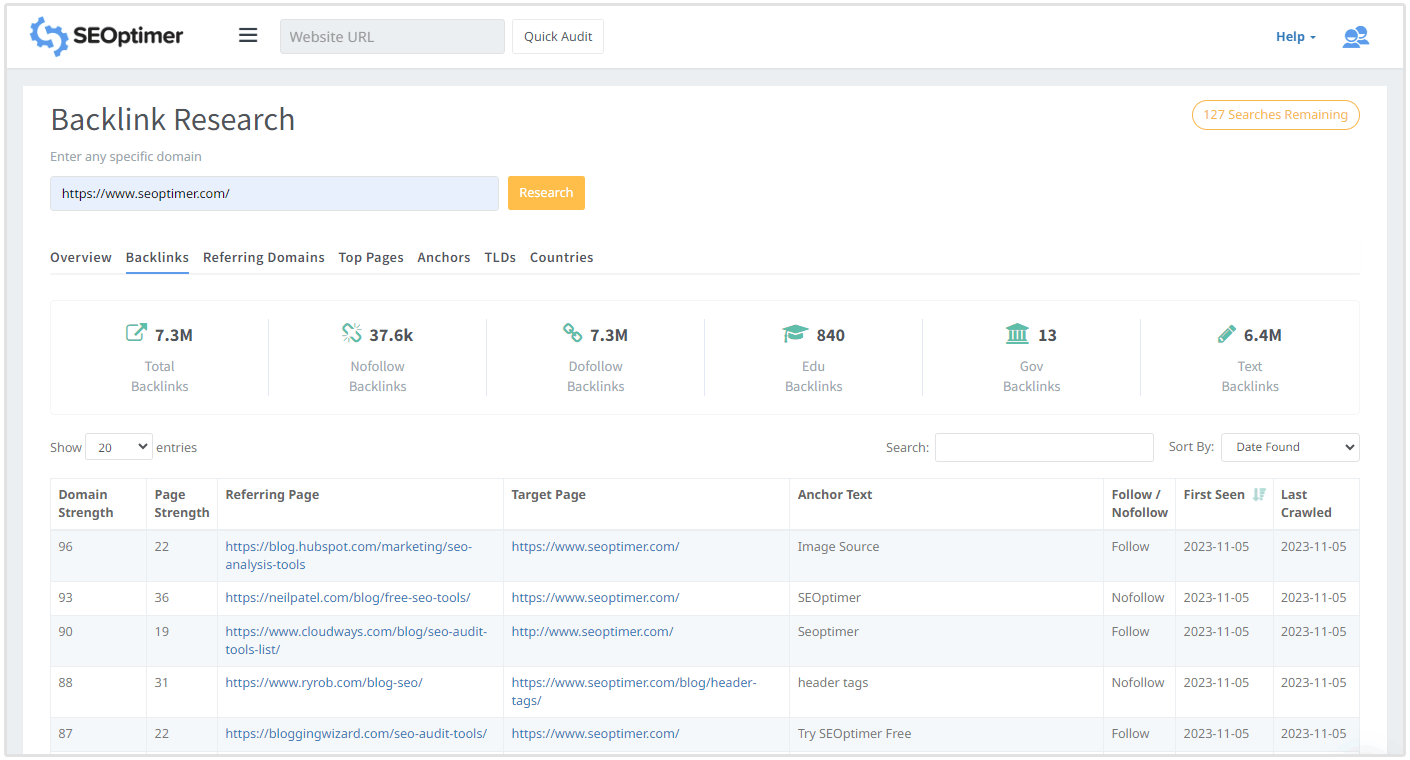
The Top Pages Tab will show the internal pages on your domain that have acquired the most backlinks.
With the help of this data, you will get a good idea of your domain's reputation and strength. The higher the number, the better your link profile.
How You Can Build a Good Backlink Profile
The quality of backlinks determines the strength of your link portfolio. Building a strong and effective backlink profile is essential for enhancing your website's SEO performance and credibility.
Here’s how you can construct a robust backlink profile through strategic actions and best practices:
Create Linkable Assets
Linkable assets are high-quality content pieces that help you earn backlinks.
For instance, you can create infographics, long-form content, videos, online tools, case studies, and other assets. Make sure your content is super valuable and caters to the needs of your target audiences.
For example, the below BBC article about the most liveable cities for 2024 has earned over 990 dofollow backlinks.
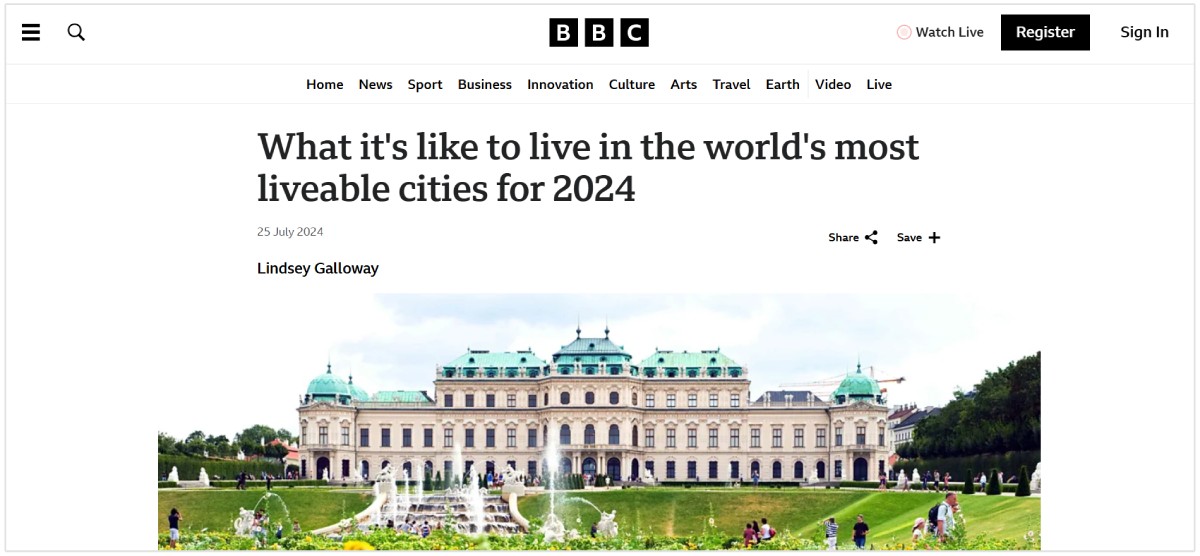
By doing a quick competitor analysis, you can identify the content assets (topics and content types) that attract the most backlinks. You can use our Backlink Checker tool to find your competitor backlinks.
Based on your research, you can craft original, well-written, and skyscraper content pieces, which are better than what’s already ranking on Google for the same topic.
Publish content on topics that attract attention from editors and reporters.
Such content types include data-driven insights, expert opinions, or breaking news, all of which are frequently cited by media and industry blogs.
Develop a High-End Link Acquisition Strategy
Quality beats quantity when it comes to link building. Hence, you should build a solid link acquisition plan that builds links from authoritative and trusted websites with a high domain strength.
Find unlinked brand mentions, as they are the easiest to locate and help you gain links from relevant sources. You can find unlinked brand mentions using Google Alerts.
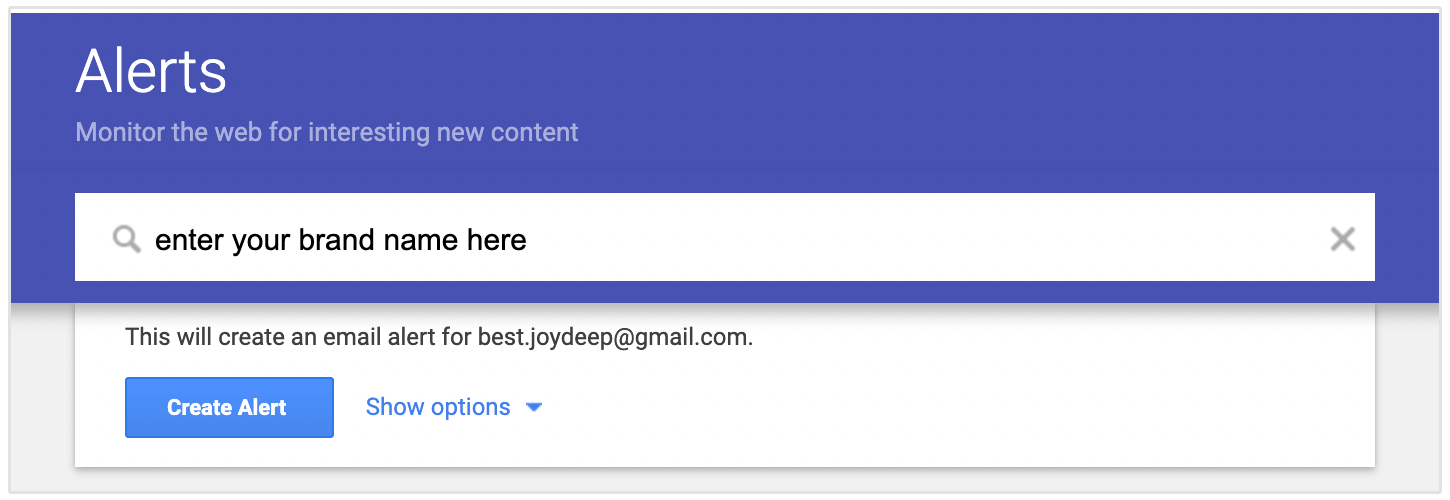
The tool will return all pages that mention your brand name. You can filter the pages that mention your brand without linking to the website.
All you need to do is email the web admins and request them to link to your site. Your request won’t be sidelined, and the chances of approval will be higher since they have already mentioned your brand in their content.
Do guest blogging as they improve your site’s credibility and help you build inbound links from established domains. You have full control over which sites to approach.
Pick relevant and high domain strength websites that are looking for contributors and write a high-quality article for them.
You should contextually include a dofollow link back to your site within the content body for maximum benefit. You can also take a branded anchor link to your homepage.
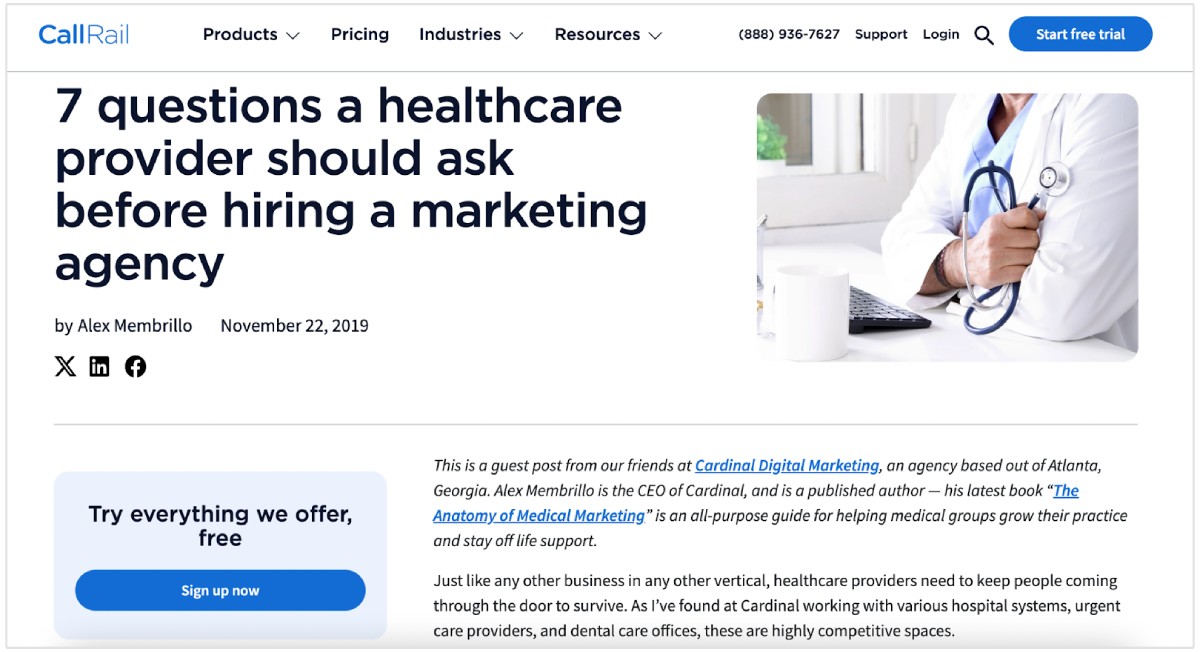
Apart from guest posting and unlinked brand mentions, you can use other link acquisition strategies like broken link building, digital PR, image link building, resource page link building, and niche link edits.
Use a Variety of Anchors
A natural link profile contains a variety of anchor texts. Hence, you should not use your main money text as your primary anchor text when building backlinks to your site.
Ideally, hyperlinks should have a mix of several different diverse anchor texts, so in the case of SEOptimer, this would look something like this:
- Branded Anchor Text ("SEOptimer")
- Partial Match Keyword-Rich Anchor Text ("this SEO audit tool is easy to use")
- Generic Anchor Text ("click here")
- Long-Tail Keyword Anchors ("best SEO audit tool for small businesses”)
- LSI Keyword Anchors ("website audit software")
- Call-to-Action Anchors ("analyze your website with our free website audit tool")
- Brand and Keyword Hybrid Anchors ("SEOptimer SEO audit tools")
- No Text Anchors ("image link")
- Natural Sentence Anchors ("I tried this SEO audit tool”)
- Blog Post Title Anchors ("best SEO Audit tools for 2024")
- Exact Match Keyword-Rich Anchor Text ("SEO audit tool")
- Naked URLs ("https://www.seoptimer.com")
Maintain a Healthy Dofollow to Nofollow Ratio
Healthy backlink profiles have dofollow to nofollow links in the ratio of 80:20. Meaning, you should have 80% dofollow links and 20% nofollow links.
However, there are exceptions here, and some sites even have more than 90% dofollow links using natural anchors, or some might have a ratio of 50-50, where 50% of the links are dofolow and 50% nofollow.
The ideal ratio of dofollow vs nofolow also depends on your competition and niche. So, there is no magic number.
A profile that exclusively contains dofollow links appears unnatural, as it suggests potential link schemes or paid link acquisition strategies, which are against search engine guidelines. You can check dofollow and nofollow links in your backlink profile using SEOptimer.
Also, over-optimization is a common reason for search engine penalties.
If a site has an unnaturally high number of dofollow links, it may trigger search engines’ spam filters, resulting in penalties or decreased rankings.
Maintaining a healthy mix helps avoid these penalties.
Acquire Links from a Variety of Sources
A strong link profile has backlinks from a variety of referring domains acquired via different link building strategies. Having backlinks from different websites helps diversify your backlink sources and reduce dependency on any single strategy.
Ideally, your backlink profile should include a mix of link types, such as:
- Guest Post Links
- Resource Page Links
- PR Links
- Widget Links
- Image Links
- Business Directory Links
- Forum Links
- Social Media Profile Links, and others
Avoid Low-Quality Links
Links from PBNs and low-quality domains using exact-match anchors negatively impact your link profile. They might lead to penalties if the search engine believes you are trying to manipulate search results by engaging in link schemes.
Here is an example of a PBN using a keyword-rich anchor:
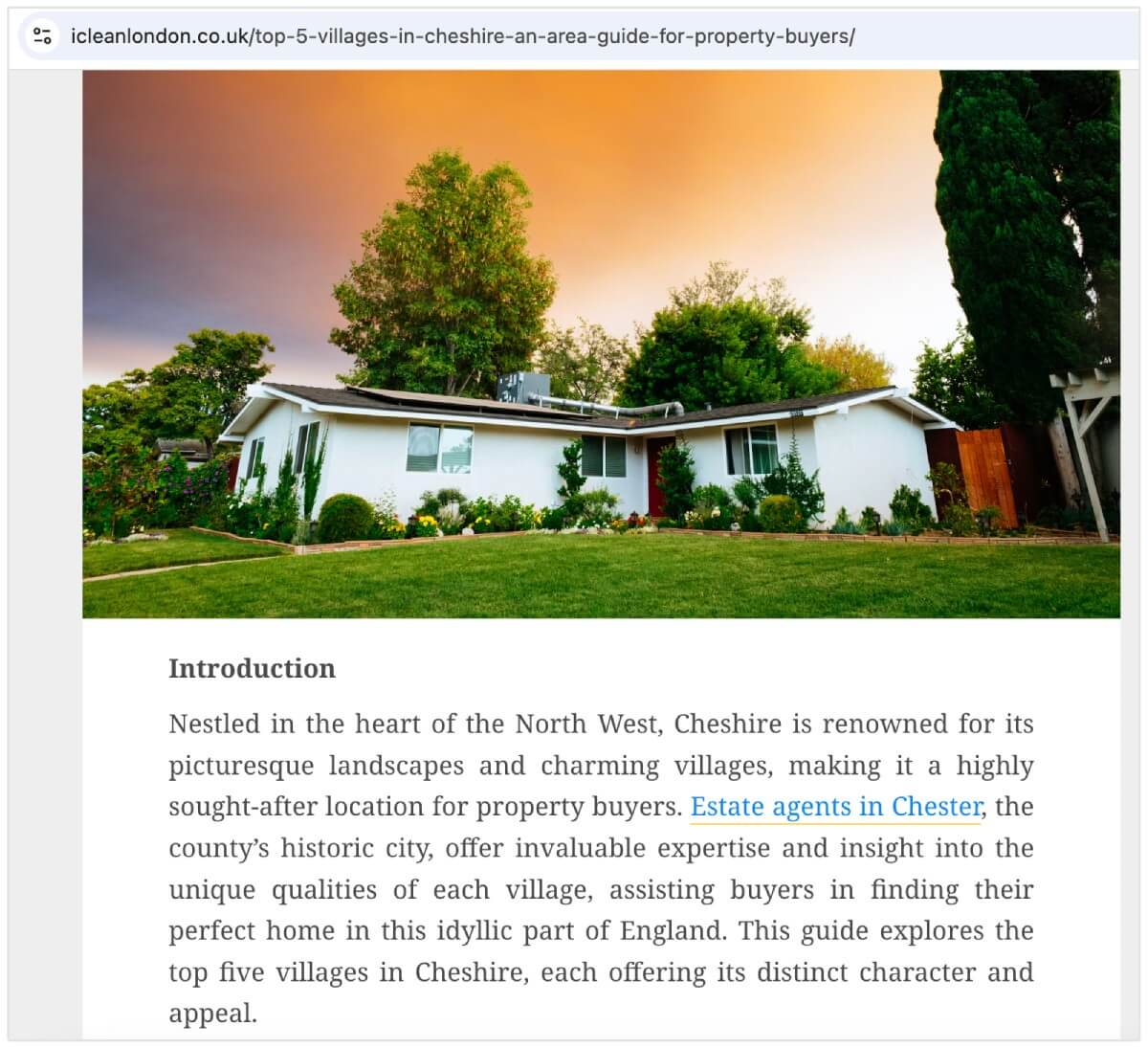
You must avoid incoming links from untrusted sources. Perform a link audit and see if the link comes from a high-spam or low-authority site. Check the domain strength using the SEOptimer backlink checker to have an idea of the quality of the website.
Conclusion
A strong backlink profile is essential for enhancing your website's SEO performance and overall search engine credibility. It comprises a diverse array of organic, natural links, including both dofollow and nofollow options.
The quality, diversity, and authority of these backlinks are more crucial than their quantity. To maintain a strong backlink profile, you should focus on acquiring editorial links from high-authority domains using a variety of anchor texts, such as naked URLs, generic, branded, and keyword-based anchors.
By optimizing your backlink profile, you can improve your website’s visibility in organic searches, grow your organic traffic, and generate more qualified business leads.
